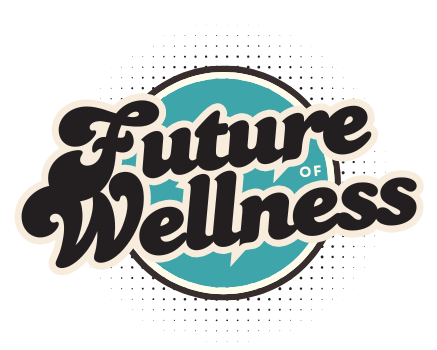When you think “vegan,” you might picture smoothies and meal prep.
Useful, sure—but there’s a whole world of experiences that deepen connection, joy, and meaning around a plant-based life.
I’ve pulled together ten underrated ideas that have changed how I relate to food, my body, and the planet. Try even one and see what shifts.
1. Forage with a local guide
Ever walked past a patch of weeds and not realized half of it was dinner?
A guided foraging walk teaches you to identify edible greens, herbs, berries, even mushrooms—safely.
Seeing dinner in the cracks of your neighborhood trail rewires how you value biodiversity. I still remember the first time I sautéed wild nettles; suddenly “eating plants” wasn’t an abstract ethical choice—it was participation in an ecosystem.
Bring a notebook, ask about sustainable harvesting (never take the first plant you see), and always go with an expert.
Once you learn the basics, even your ordinary jog becomes a mini treasure hunt.
2. Spend a day volunteering at a farm sanctuary
Spending time mucking stalls, chopping produce for rescued chickens, or brushing a retired dairy cow is grounding.
You move from intellectual empathy to visceral understanding. As Jane Goodall has said, “What you do makes a difference, and you have to decide what kind of difference you want to make.”
That difference feels real when a timid goat finally leans its weight against your leg.
Sanctuaries often need weekday help—another reason this experience flies under the radar.
Wear boots, bring water, and let the animals set the pace. You leave tired, dirty, and strangely lighter.
3. Take a fermentation workshop
Fermentation looks intimidating until you’ve massaged cabbage with salt and watched it transform.
Sauerkraut, kimchi, tempeh, kombucha—all probiotic powerhouses—and they elevate plain grains and veggies. A hands-on class demystifies safety (hint: clean jars and salt ratios matter) and sparks creativity.
There’s also a psychological benefit: fermentation forces patience. You can’t rush microbes.
In a world of instant everything, waiting for bubbles to appear is its own mindfulness practice.
Plus, once you master one ferment, you start seeing leftover produce as potential instead of waste.
4. Attend a vegan wine or craft beer tasting
Many people don’t realize some wines and beers are clarified with animal-derived fining agents like isinglass or gelatin.
A vegan-focused tasting introduces you to producers using bentonite clay or pea protein instead. It’s a sensory education: you learn to articulate tannins, acidity, mouthfeel—skills that make future dinners more intentional.
Ask the sommelier or brewer about their certification process.
Bring a friend who “doesn’t get” veganism; nothing converts skepticism faster than a flight of complex reds or a hazy IPA that happens to align with your values.
5. Book a weekend at a permaculture or eco‑vegan retreat
Instead of a typical vacation, spend two days on a permaculture homestead or eco-lodge where meals come from steps away.
You might help mulch, learn rainwater catchment, or harvest herbs you later taste in dinner. That closed-loop system is a living classroom.
I once traded a spreadsheet-filled weekend for a retreat where we started mornings with soil between our fingers.
By Monday my stress markers—tight shoulders, shallow breathing—had softened. You return with practical ideas (compost layering, guild planting) you can scale to a balcony.
6. Join a community-supported agriculture (CSA) harvest day
CSAs sometimes invite members to farm work days: picking tomatoes, bundling kale, washing carrots.
Participating collapses the distance between seed and plate.
Remember Michael Pollan’s line: “Eat food. Not too much. Mostly plants.” Spending an afternoon harvesting shows how much labor “mostly plants” entails—and builds gratitude that lasts long after the season ends.
Pro tip: bring boxes and a cooler; farmers often send volunteers home with seconds that become soups or frozen smoothie packs.
7. Participate in a food rescue or gleaning event
So much perfectly edible produce never reaches stores because it’s slightly blemished or surplus.
Local nonprofits organize gleaning: volunteers collect remaining crops after commercial harvest, diverting them to shelters. It’s physical, purposeful, and eye-opening.
You see abundance and imperfection side by side—and realize personal consumption choices are only one lever. Systemic change also needs hands in the field.
After my first gleaning morning, I started planning meals around “ugly” veggies and felt less anxious about cosmetic flaws.
8. Grow gourmet mushrooms at home
A countertop mushroom kit—oyster, lion’s mane, shiitake—turns a block of inoculated substrate into meaty clusters in days.
Mist, wait, harvest. Watching white mycelium colonize is biology theater. The flavor difference from store-bought is dramatic, and you can dehydrate extras for umami powder.
Once comfortable, some people move to bulk buckets or logs. It’s a low-space, high-yield project that reinforces circular thinking: spent substrate becomes garden compost.
You literally create protein-rich food from sawdust.
9. Host a zero‑waste plant-based supper club
Invite a few curious friends and set rules: everything sourced locally or from bulk bins, no single-use packaging, leftovers redistributed.
Rotate who chooses the theme—Middle Eastern mezze, fermentation fusion, “root-to-leaf.”
This isn’t about perfection; it’s experimentation. You learn creative swaps (aquafaba in dessert, carrot-top pesto) and build community around iterative improvement.
Social accountability keeps sustainable habits sticky. Keep notes after each gathering—what worked, what flopped—to evolve the format.
10. Fuel an endurance adventure with homemade vegan sports nutrition
Whether it’s a half-day hike, cycling century, or trail run, plan one outing fueled entirely by homemade plant-based options: date‑nut energy balls, salted potato bites, DIY chia gels, electrolyte water with citrus and a pinch of salt.
As the Academy of Nutrition and Dietetics notes, appropriately planned vegan diets are “healthful, nutritionally adequate” even for active lifestyles.
Testing this in real time builds trust in your body and reduces reliance on packaged gels.
I shifted from commercially sweet goos to rice cakes and noticed steadier energy and fewer stomach issues.
Final thoughts
Pick the experience that sparks the most curiosity and put it on your calendar this month.
These aren’t about being the “perfect” vegan; they’re about expanding joy, skill, and connection.
When lifestyle aligns with values in multiple dimensions—community, ecology, creativity—consistency becomes easier.
So, which one will you try first? I’d love to hear how it goes.






